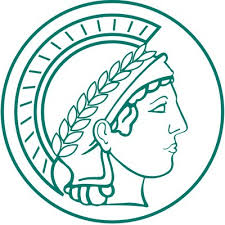
Discovering Patterns through Legal Corpus Linguistics
18th – 19th March 2016, Heidelberg
What we call chaos is just patterns we haven't recognized.
Chuck Palahniuk
What do law and language have in common? To the untrained eye, both may occasionally seem erratic or even chaotic, as both can be described as "phenomena of the third kind": not growing entirely rank, but not constructed to plan either - neither autonomous agents nor artificial artifacts. Instead, law and language are emergent: they emerge from theory-based rules, not by way of arithmetic or logic - but by collective habits giving rise to patterns of usage. Further considering that law can only be conceived of through and in language, it even forms a second-order usage pattern: law is one manifestation of how we use rules and norms stated in language, and is per se our way of using semantic symbols in general. This understanding of law and language as an interwoven pattern-based fabric opens up exciting avenues for research: How does the practice of speaking and writing in and about law shape our view of justice? What can we learn from looking at large collections of legal texts through the lens of corpus linguistics? How do patterns (pre-)determine law, language and law-through-language? And once we recognize such patterns, how much chaos remains?
The conference addresses these and other questions through a systematic investigation of patterns in law and language, particularly through the lens of corpus linguistics as applied to textual mass data. It aims to bring together legal scholars, linguists, computational linguists, media and communication analysts and policy makers, but also welcomes interested members of other disciplines and faculties.
Keynote speakers
- Lawrence Solan is Professor of Law and Director of Graduate Education at Brooklyn Law School in New York (USA). Solan holds both a law degree and a Ph.D. in linguistics. His scholarly works are largely devoted to exploring interdisciplinary issues related to law, language and psychology, especially in the areas of statutory and contractual interpretation, the attribution of liability and blame, and linguistic evidence.
- Stephen C. Mouritsen is a member of Parr Brown’s commercial litigation group. With a background in linguistics, Mr. Mouritsen has written and lectured extensively on the intersection between law and language. He currently serves as an adjunct professor at the J. Reuben Clark Law School at Brigham Young University.
Organizers
Dr. Hanjo Hamann (Max Planck Institute Bonn) and Prof. Dr. Friedemann Vogel (University of Freiburg)
Conference report (German only)
Christoph Lukas (2017): Tagungsbericht: The Fabric of Law and Language, Heidelberg 2016. In: Archiv für Rechts- und Sozialphilosphie, Volume 103, Number 1, January 2017, pp. 136-143(8).
Panel discussion transcript
Friedemann Vogel, Hanjo Hamann, Dieter Stein, Andreas Abegg, Łucja Biel, Lawrence M. Solan (2017): “Begin at the beginning” — Lawyers and Linguists Together in Wonderland. In: JLL 6, pp. 90–100.
Guest Auditors are welcomed. Please use the registration form.
Location: the conference takes place at the Heidelberg Academy of Sciences (Karlstraße 4, 69117 Heidelberg, Old town / "Altstadt"), please find the Google location here: https://goo.gl/maps/x5oFKnsTySL2.
Call for papers (for the follow-up publication only)
The conference will be followed up with a peer-reviewed journal issue, including selected conference proceedings and also inviting papers that will not be presented in the conference but addressing the same topic. Contributors are expected to submit an extended abstract with 800–1000 words by 31st December 2015. The abstract should summarize the addressed research questions, the methodological background and the hypotheses.
Timeline
| 15.10.2015 | Call for papers & Conference program online | |
| 31.12.2015 | Deadline for Cfp | |
| 31.01.2016 | Feedback and Selection Cfp | |
| 31.09.2016 | Deadline for full text submission | |
| 15.12.2016 | Peer Review of the full texts | |
| 31.01.2017 | Deadline for revised texts | |
| 15.02.2017 | Issue publication |


